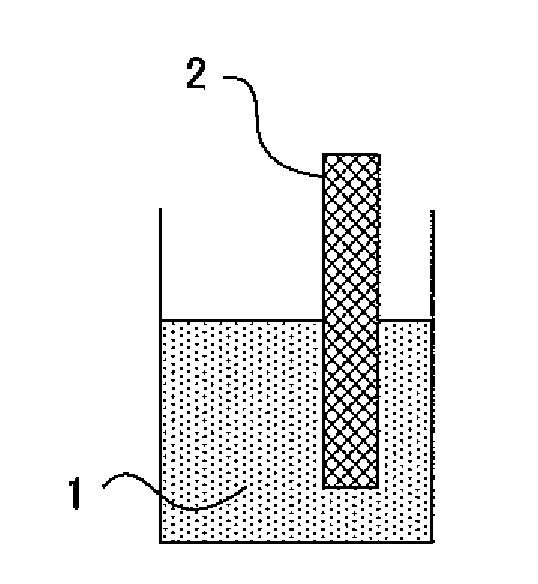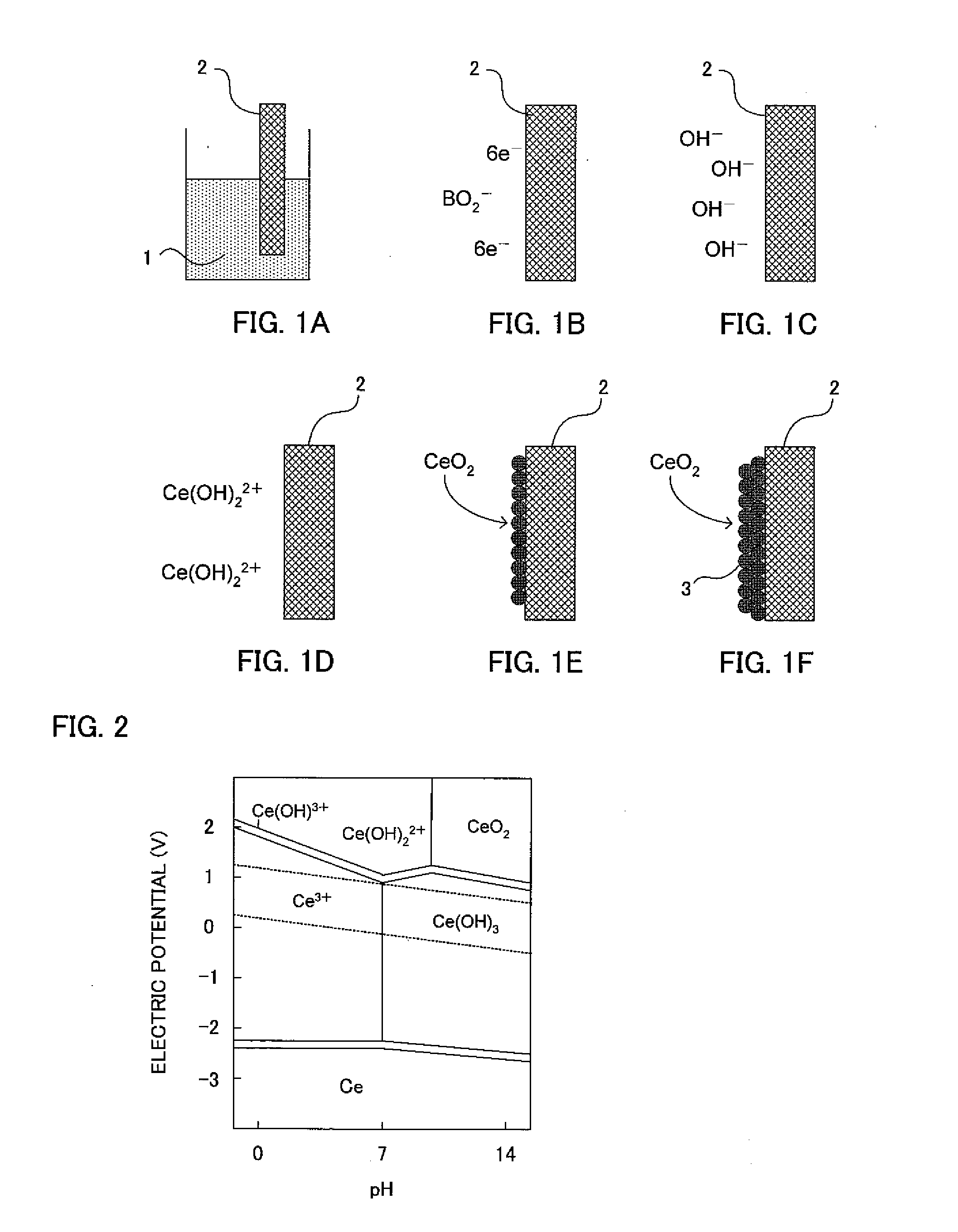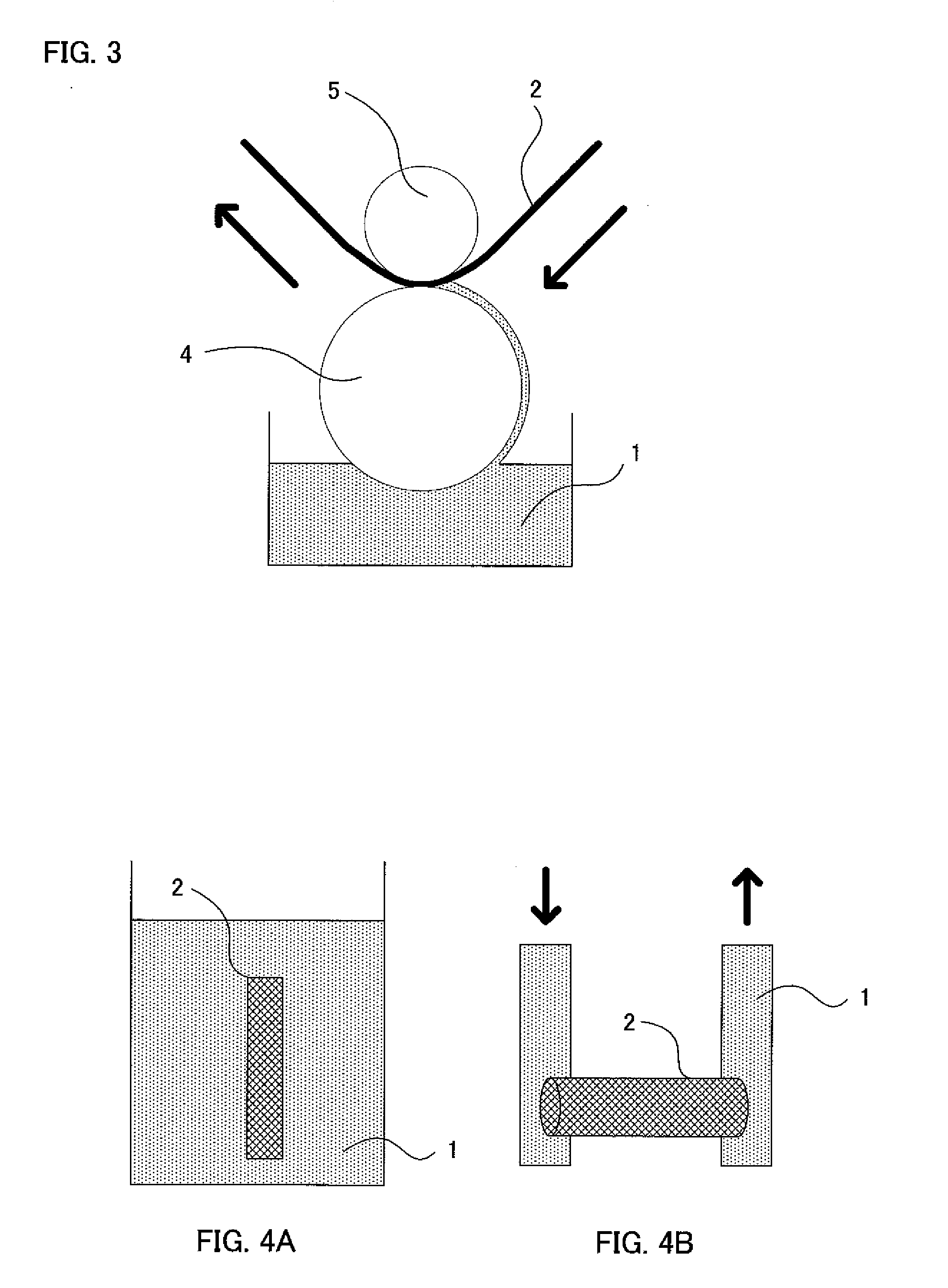Method of Producing Metal Oxide Film
a metal oxide film and metal oxide technology, applied in the field of metal oxide film production, can solve the problems of poor shape-following properties, increased costs and complex operability, and difficulty in forming an even metal oxide film on a substrate with a structural par
- Summary
- Abstract
- Description
- Claims
- Application Information
AI Technical Summary
Benefits of technology
Problems solved by technology
Method used
Image
Examples
example 1
Formation of an ITO Film on a Porous Alumina Particle Layer
[0078] A 20 wt % solution of alumina fine particles (manufactured by Micron Co., Ltd., particle diameter: 30 μm) was coated onto a glass substrate by a bar coating manner, and the resultant was fired at a temperature of 500° C. for 2 hours to yield the glass substrate on which a porous alumina particle layer was formed.
[0079] Next, a boron-trimethylamine complex (manufactured by KANTO KAGAKU) as a reducing agent was added to 1000 g of a 0.03 mol / L indium chloride and 0.001 mol / L tin chloride solution in water so as to give a concentration of 0.1 mol / L. Furthermore, 2 g of sodium chlorinate was added as an auxiliary ion source to the solution to yield a metal oxide film-forming solution.
[0080] Next, the substrate obtained by the above-mentioned method was immersed in the above-mentioned solution at a temperature of 70° C. for 12 hours. At this time, the metal oxide film-forming solution was circulated and caused to pass th...
example 2
Formation of a Zirconium Oxide Film on a Copper Substrate Subjected to Microfabrication
[0084] In the present example, a zirconium oxide film was formed on a copper substrate subjected to a microfabrication, and the corrosion resistance thereof was evaluated.
[0085] In the example, a copper (thickness: 0.5 mm) subjected to a microfabrication (holes 1 mm in diameter and 50 μm in depth, and grooves 50 μm in width, 10 mm in length, and 20 μm in depth) by an etching method was firstly prepared as a substrate.
[0086] Next, a boron-dimethylamine complex (model number: 04886-35, manufactured by KANTO KAGAKU) as a reducing agent was added to 1000 g of a 0.03 mol / L oxyzirconium nitrate solution in water to give a concentration of 0.1 mol / L, so as to yield a metal oxide film-forming solution.
[0087] Next, the metal oxide film-forming solution was heated up to a temperature of 70° C., and a Naflon Bubbler (manufactured by AS ONE CORPORATION) was used to generate air bubbles at a constant tempe...
example 3
Formation of a Titanium Oxide Film onto an Acrylic Substrate Subjected to Microfabrication
[0092] An object of the present example was to form a titanium oxide film onto an acrylic substrate that is subjected to a microfabrication, thereby giving hydrophilicity thereto.
[0093] In the example, an acrylic substrate (thickness: 5 μm) subjected to mechanical microfabrication (grooves 500 μm in width, 100 mm in length, and 50 μm in depth) was first prepared as a substrate.
[0094] Next, diisopropoxytitanium bis(ethylacetate) (manufactured by Matsumoto Chemical Industry Co., Ltd.) was dissolved into 1000 g of a mixed solution where water, isopropyl alcohol (IPA), and toluene were adjusted to give a ratio of 4:4:1, so as to give a concentration of 0.1 mol / L. Next, a boron-dimethyl sulfide complex (manufactured by KANTO KAGAKU), as a reducing agent, was added to the solution so as to give a concentration of 0.1 mol / L. Furthermore, 1 g of sodium nitrite was added to the solution to yield a me...
PUM
| Property | Measurement | Unit |
|---|---|---|
| thickness | aaaaa | aaaaa |
| thickness | aaaaa | aaaaa |
| wavelength | aaaaa | aaaaa |
Abstract
Description
Claims
Application Information
 Login to View More
Login to View More - R&D
- Intellectual Property
- Life Sciences
- Materials
- Tech Scout
- Unparalleled Data Quality
- Higher Quality Content
- 60% Fewer Hallucinations
Browse by: Latest US Patents, China's latest patents, Technical Efficacy Thesaurus, Application Domain, Technology Topic, Popular Technical Reports.
© 2025 PatSnap. All rights reserved.Legal|Privacy policy|Modern Slavery Act Transparency Statement|Sitemap|About US| Contact US: help@patsnap.com



